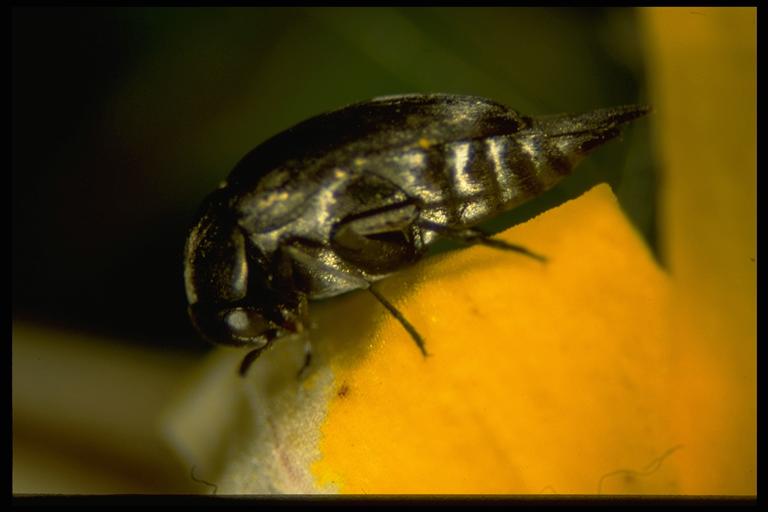
A tumbling flower beetle , Mordella sp. (Coleoptera: Mordellidae). Photo by Drees.
Common Name: Tumbling flower beetle
Scientific Name: Mordella sp.
Order: Coleoptera
Description: These beetles are basically black and about 1/4-inch long. They are wedge shaped with the tail coming to a point. M. atrata is almost solid black except for the base of the tail which show shows silvery pubescense. M. marginata is very similar but shows a variety of irregular silvery pubescent patterns on the pronotum and elytra. The hind legs are flattened and have an enlarged femur which they use to kick when they are in hard surface. This kicking gives them the name of tumbling flower beetles when they bounce erratically in a net. There are several other members of the genus Mordella. The largest genus in the family is Mordellistena which are generally smaller and seldom as common. They may be patterned or plain and come in a variety of colors from black, yellow, brown and reddish.
Life Cycle: Adults are common on flowers where they can be abundant in some situations. Larvae of Mordella species are recorded from dead and decaying logs. Larvae of Mordellistena are primarily stem borers in pithy stems of plants especially composites and grasses. There is apparently one generation per year. Adults are good fliers and are captured in flight intercept traps.
Habitat and Food Source(s): Adults apparently feed on pollen of many flowers. They are often found on umbelliferous flowers and composites and can be abundant in some circumstnaces. The adults are most often seen in the spring. Several species may occur together.
Pest Status: Mordellids are not known to be a pest although the larvae show up in sunflowers.
For additional information, contact your local Texas A&M AgriLife Extension Service agent or search for other state Extension offices.
Literature: Liljeblad 1945. Jackman and Riley 1995.